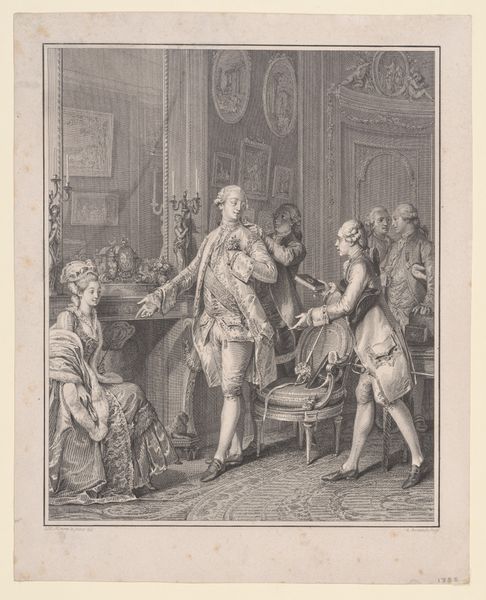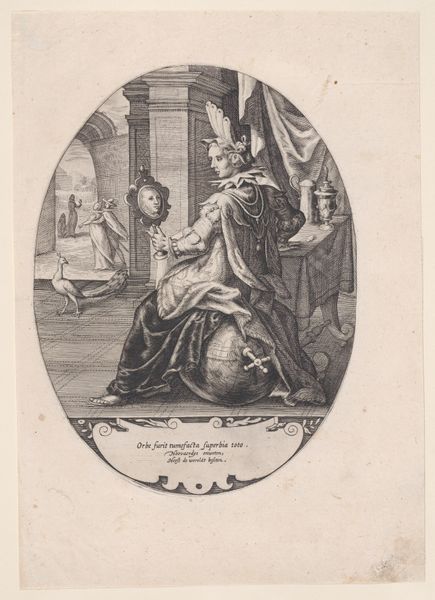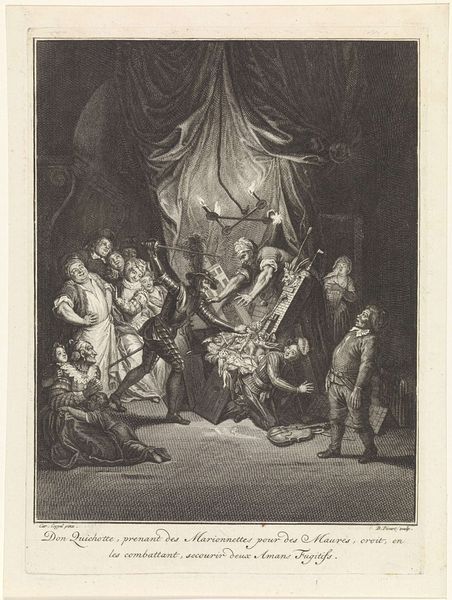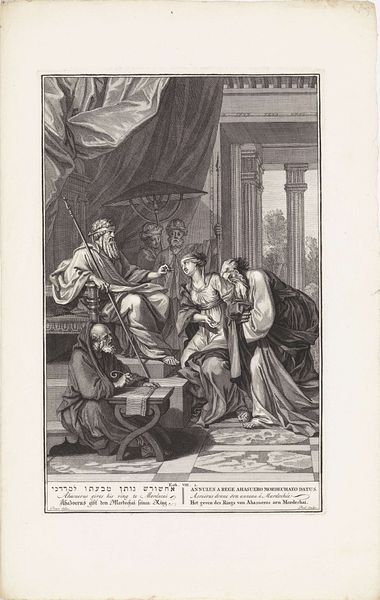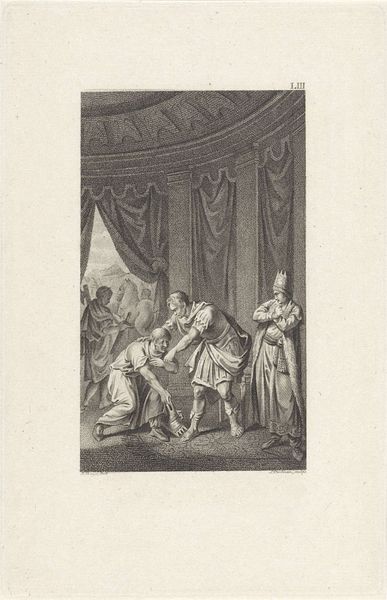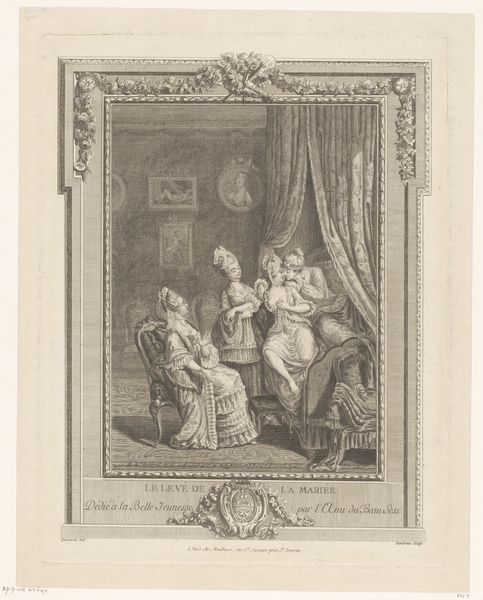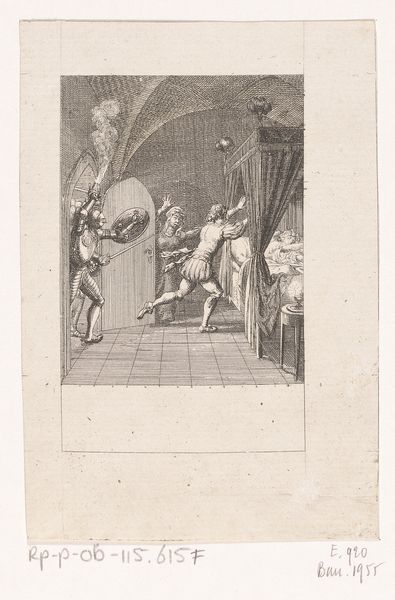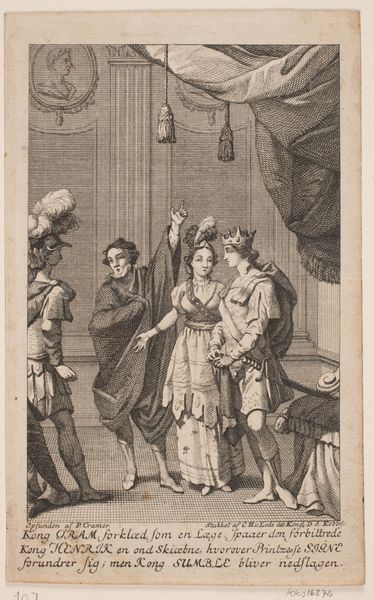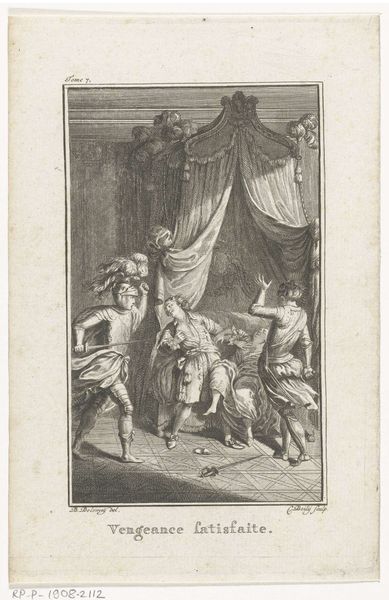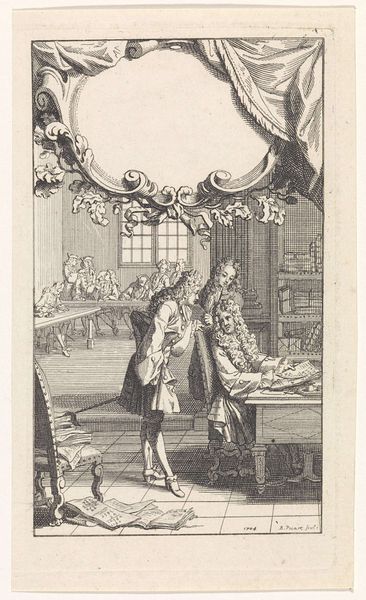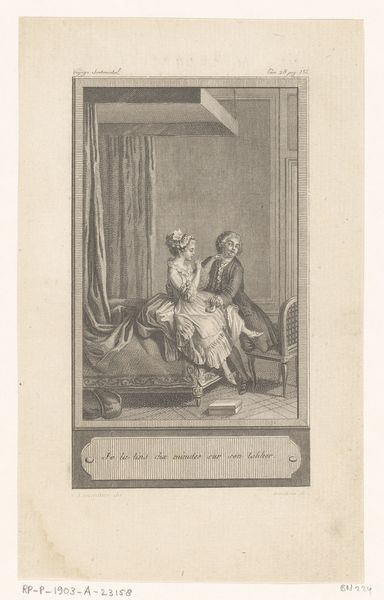
engraving
#
baroque
#
figuration
#
genre-painting
#
history-painting
#
engraving
Dimensions: height 139 mm, width 85 mm
Copyright: Rijks Museum: Open Domain
Editor: This engraving by Jan Wandelaar, created in 1719, is called "Man kneeling before woman in sleeping quarters.” I’m struck by the stark contrast of light and dark; it seems to amplify the drama unfolding. What do you see in this piece? Curator: What immediately captures my attention is the implied social commentary embedded within this domestic scene. Here, a man kneels before a woman in what seems like a richly adorned chamber. The engraving’s creation during the Baroque period situates it within a historical context where class and gender roles were heavily scrutinized. How does the positioning of the figures impact our understanding of power dynamics at play? Editor: Well, it feels like he is subservient to her. Is that what you mean? The way she’s standing over him makes her seem dominant. Curator: Precisely. And consider the setting – the intimate space of the ‘sleeping quarters’ complicates matters. What story could the artist be telling about the intersection of personal relationships and societal expectations during the early 18th century? This work becomes more than just a genre painting; it's an examination of social hierarchies. Are we viewing genuine vulnerability or a staged performance for social gain? The fact that it could be a "history painting" only adds another layer to unpack. Editor: So it challenges how we view men and women during the 18th century? Is it promoting any values? Curator: Not necessarily promoting, but certainly prompting a discussion. Visual imagery then, as now, served as a tool for both reflecting and shaping public opinion. By examining this image, we're provided insight into what behaviors and values were being negotiated and debated at that time. It's crucial to investigate where it was displayed, and what social groups consumed and responded to it. Editor: This has totally changed how I look at this work, seeing it now as less a theatrical scene, and more of a loaded conversation starter. Curator: Indeed. Analyzing art history this way shows us art's cultural function in shaping and preserving how social stories and truths get made.
Comments
No comments
Be the first to comment and join the conversation on the ultimate creative platform.

